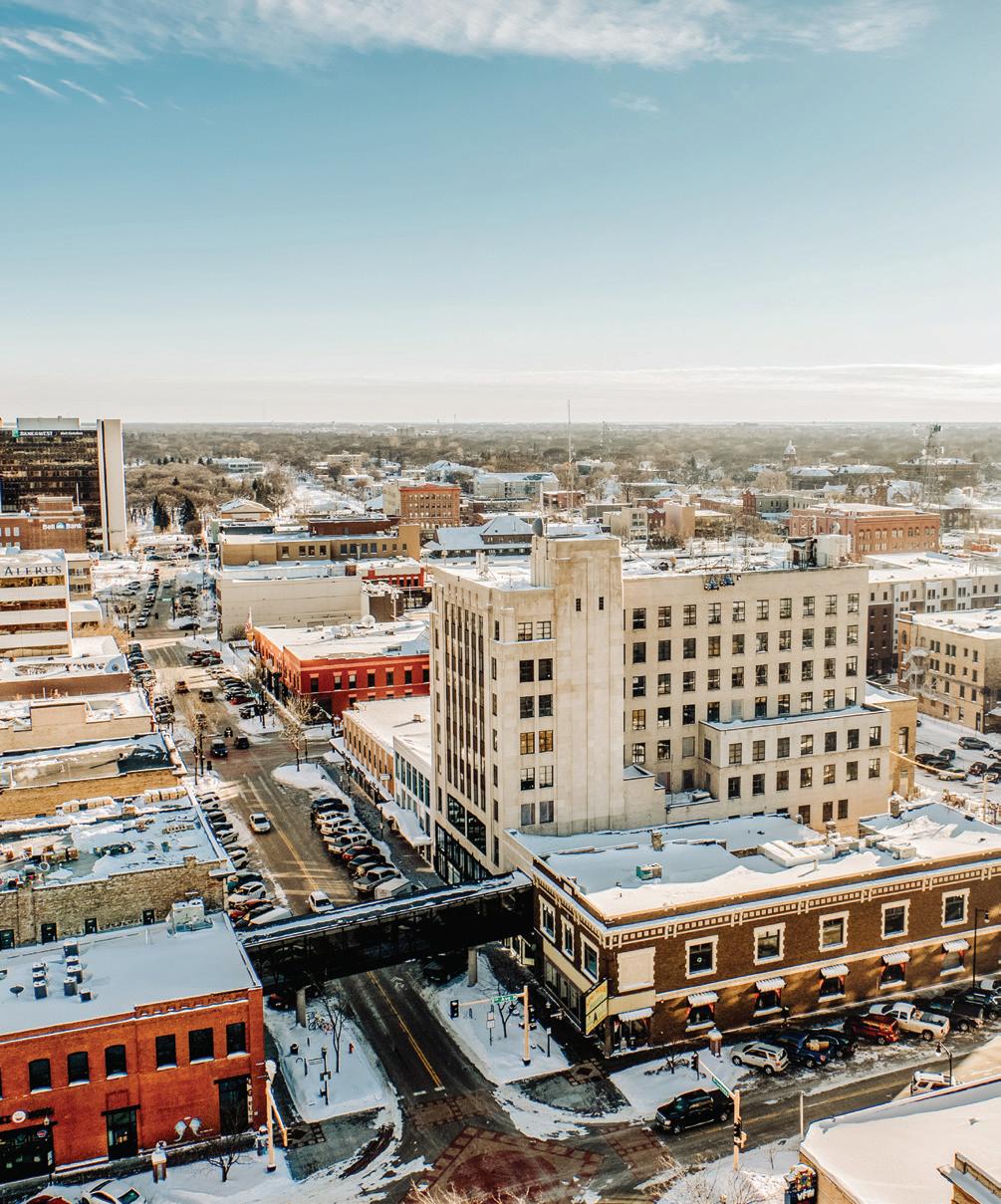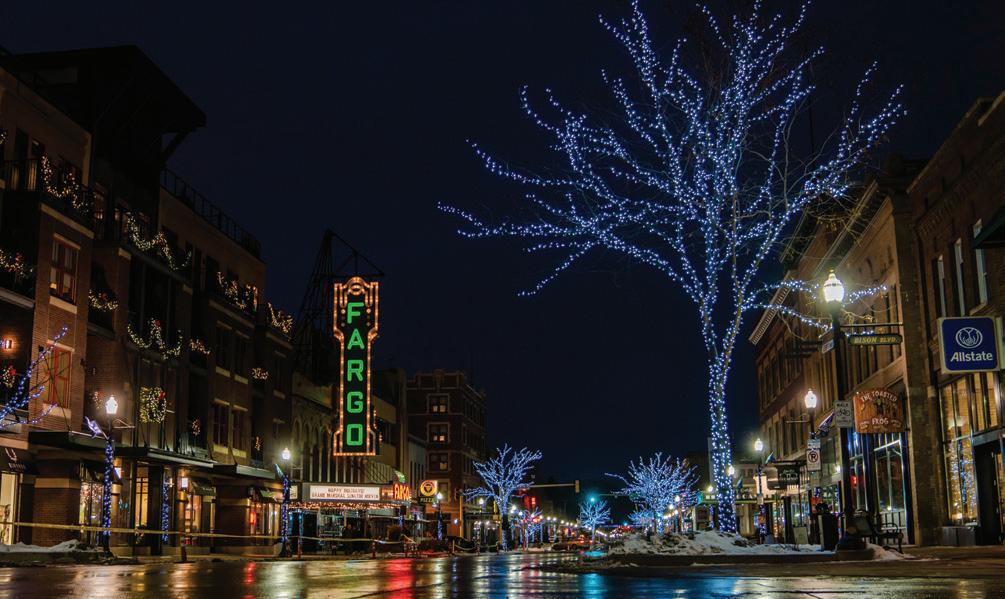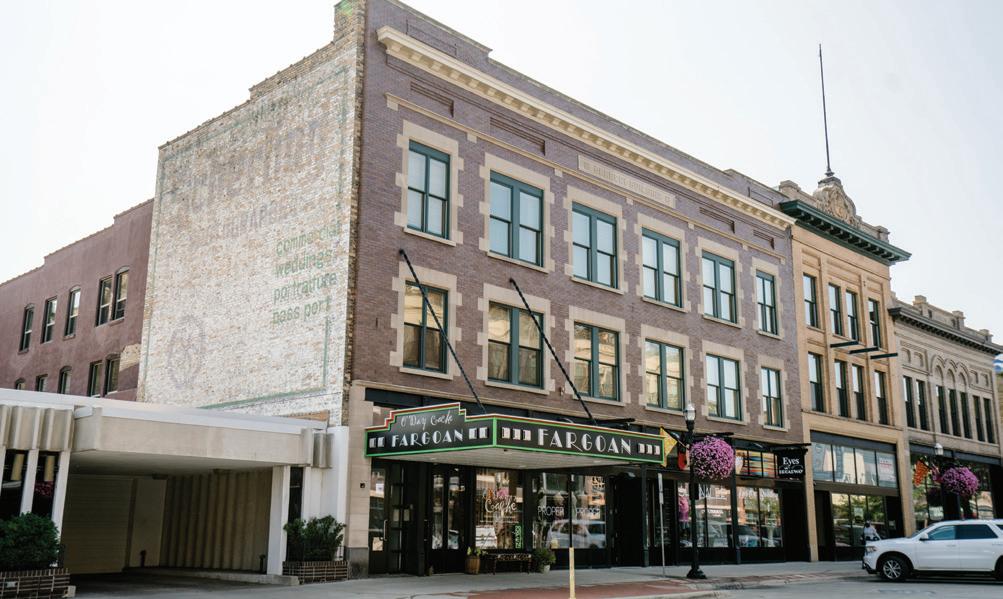
3 minute read
Why Downtown Is Special

Why DOWNTOWN IS SPECIAL
Contributor Paul H. Gleye is a professor of architecture at North Dakota State University, his fields of expertise including historic preservation and urban design. As of late, Downtown Fargo has seen some exciting changes, as Block 9 reaches its peak height and new businesses are reimagining old spaces. Join Gleye as he delves into why Downtown Fargo makes such a great anchor to this community from an urban design perspective.

Downtown Fargo has emerged once again as the heart of the city after suffering decades of neglect. Downtown Moorhead is generating new excitement as plans emerge to re-imagine a true city center to replace the one lost to urban renewal a half-century ago. Why are downtowns being rediscovered as special, when everything is already available along the suburban shopping boulevards with plenty of free parking?
Downtowns offer an intense experience that rests on four qualities. The first is human scale, as a place to be experienced while walking rather than driving. Most downtown storefronts are 25 feet wide, so as you walk along the street you encounter a new “experience” – a new shop or restaurant – every few steps. And most downtown storefronts are built right up to the sidewalk, rather than set back behind lawns or parking lots, so you can see everything up close as you walk along.
Second, successful downtowns convey a sense of time. Most buildings in vibrant downtowns are historic. They have been around for a century or more, and they exhibit the materials and craftsmanship of their era – much of which would be impossible to re-create today. Historic buildings often have tall ground floors, again very expensive to build today, that allow for expansive show windows. And above the ground floor, you see carefully-fitted bricks and stonework, decorative cornices at the tops of buildings, and fine examples of the sign-makers art. Some of Fargo’s most beautiful signs are historic, like that of the Fargo Theatre, while others are indeed new, such as the striking neon sign in front of BernBaum’s.

Third, downtown has different shops and restaurants from those found in outlying areas. Downtown shops tend to purvey unique and high-quality wares so that shopping, and window shopping, become experiences in themselves. In fact, the French term for windowshopping is “window licking.” Show windows can be even creative works. The storefront of Unglued is redesigned by the owners every few months with new patterns made from adhesive film. Zandbroz displays its creative selection of goods to attract the eye as people pass by.

Fourth, successful downtowns have many shops, restaurants, and other experiences in walkable proximity. Marketers call it the “agglomeration effect” – when many similar types of businesses congregate together, they tend to all do better than when scattered about the city. And downtown is a good place for locally-owned small shops and restaurants. A boutique that might be overlooked along a wide traffic street fits elegantly among the shops downtown. Today, downtowns are proving to be successful neighborhoods as well. In Fargo, most downtown buildings include apartments or condos above the ground floor, so that the old image of downtowns being vacant after work hours no longer applies.

Historic surroundings, locally-owned shops and restaurants in a walkable environment and an opportunity for urban living are what make downtown Fargo and other downtowns so successful today.









